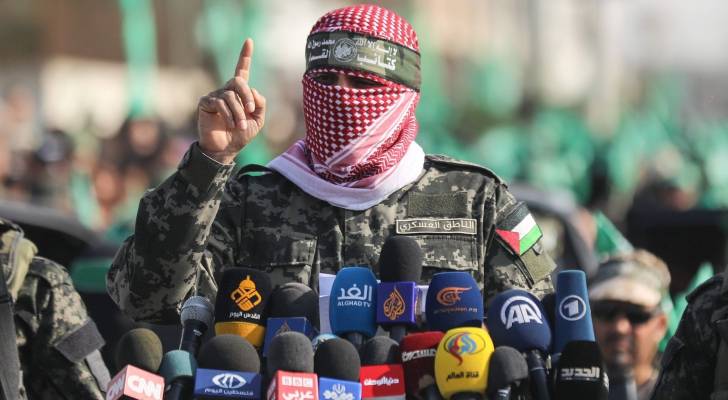Is Abu Obaida alive? Military analyst questions 'Israeli' claims of his death
Nidal Abu Zaid, a military affairs expert, has suggested that the reports of severe injuries sustained by the spokesperson of Hamas’ Qassam Brigades, Abu Obaida, may be accurate, while expressing doubts about the official 'Israeli' narrative claiming he was killed.
In an interview on Roya's Nabd Al Balad program, Abu Zaid explained that his analysis relies on several notable indicators, most prominently the absence of any announcement by the 'Israeli' intelligence agency, Shin Bet, regarding the recovery of Abu Obaida’s body, a deviation from standard procedure in such operations.
Read more: VIDEO: Abu Obaida: Injured, dead, or alive? Social media explodes
Missing Body Raises Questions
Abu Zaid highlighted that the credibility of 'Israeli' intelligence is called into question because, while 'Israel' officially announced Abu Obaida’s assassination, Shin Bet did not publicly confirm the presence of his body at the scene, an unusual omission in targeted operations.
Based on this discrepancy, Abu Zaid suggested: “The report may be accurate in that Abu Obaida suffered severe injuries but was not killed.”
The absence of a recovered body is a significant indicator, raising doubts about the official account, particularly given the history of precision operations conducted by Israeli intelligence agencies.
“Another Blow to Israel”
Abu Zaid noted that if this hypothesis proves true, Abu Obaida surviving a direct assassination attempt would represent “a second blow dealt to Israel by the resistance within 24 hours,” highlighting a compounded intelligence failure and the resistance’s ability to maneuver and remain concealed.
He emphasized that this scenario underscores the flexibility and strategic planning of the Palestinian resistance, which has successfully protected its symbolic figures despite ongoing targeted operations.
Abu Obaida’s Symbolism and the Continuity of Resistance
The expert stressed Abu Obaida’s symbolic importance within the resistance, but added: “The resistance is not confined to one individual, not Abu Obaida, not Al-Dhief, nor even Sinwar.”
He pointed out that the resistance’s continued operations over 736 days, even without its symbolic leaders, confirm that the strength of the movement lies not in any single person but in strategy, organization, and the ability to maintain intelligence and tactical performance under sustained pressure.
Abu Zaid concluded that these indicators highlight the compounded failures of Israeli agencies in confronting the resistance and underscore the need to carefully monitor field developments before accepting official narratives as absolute truth.




